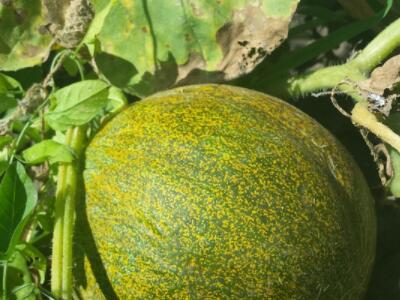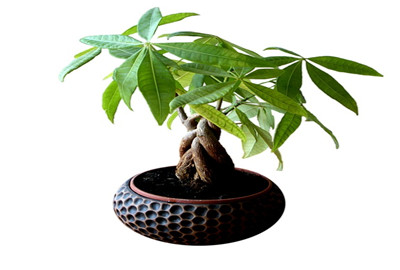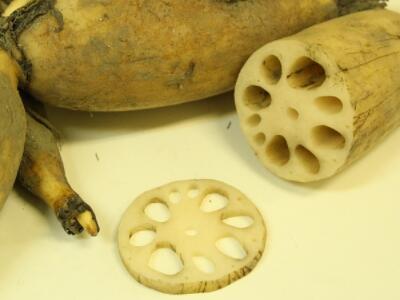What are the causes and control methods of angular spot of cucumber, watermelon, melon and mango?
Angular spot disease is a kind of disease which occurs on the leaves of cucumber, watermelon, melon, mango and other crops. So what are the causes of their occurrence and the methods of prevention and control? The disease is mainly prevented. Scientific management and good ventilation and drainage conditions can greatly reduce the occurrence of the disease.

1. Causes and control methods of cucumber angular spot.
1. Cause: pathogens invade the stomata and wounds of leaves and fruits, and are often spread around by Rain Water.
two。 Prevention and control methods: agricultural control: when fertilizer is insufficient and aging plants are prone to disease. Seeds should be disinfected, diseased leaves and diseased plants should be removed and burned in time. [3]
two。 Drug control: commonly used agents are 5%DT (copper succinate) 500x solution, 72% agricultural streptomycin 4000 times solution, 77% streptomycin 1200 times solution or 75% daconine 50 grams plus 72% agricultural streptomycin 15kg spray on water. The above agents can be used alternately, spraying every 4 days for 3 times, and the control effect can reach more than 90%.
2. Causes and control methods of watermelon corner spot.
1. The cause of occurrence: the pathogen overwintered mainly in the soil with the remains of hyphae or Sclerotinia sclerotiorum, and the hyphae could also be attached to the seeds to overwinter. When the conditions are suitable, the hyphae directly invade the cotyledons to cause the disease. in most cases, the bacteria produce a large number of conidia to spread by Rain Water or watering, forming the primary infection. After the onset of the disease, conidia were produced in the disease department for repeated infection. The suitable temperature for the disease is 22 ℃, and the suitable humidity is 85% MUE 98%.
two。 Prevention and control methods:
(1) seed collection and seed treatment of disease-free melon: 40% of the seeds before sowing can also be soaked in 55 ℃ warm water for 15 minutes, rinse with clean water and accelerate germination and sow.
(2) remove diseased leaves and diseased plants during growth or after harvest and bury them deeply, and carry out deep ploughing.
3. Causes and control methods of muskmelon angular spot.
1. Cause: a disease caused by bacteria that overwinters with the remains of the disease in the soil or attached to the surface of the seed, invades by the host's wound and natural orifice, and spreads through wind and rain, insect and human contact. Wet and rainy and high humidity in the field are the main conditions for the occurrence of the disease.
two。 Prevention and control methods:
(1) rotation with non-Cucurbitaceae crops for more than 2 years.
(2) the seeds of disease-free melons were selected and disinfected before sowing. The disinfection method is to soak the seeds in warm water of 55 ℃ for 20 minutes, or soak the seeds in 0.1% mercury solution + 1500 times of "Yunda-120" for 10 minutes, or soak the seeds in calcium hypochlorite solution + 1500 times of "Yunda-120" for 30 minutes, rinse with clean water after being removed, or soak the seeds for 2 hours with streptomycin sulfate or neophytomycin + 500 times of "Yunda-120" for 2 hours.
(3) timely removal of diseased leaves and deep burying of diseased vines, timely topdressing and reasonable watering, and strengthening ventilation and humidity reduction management for greenhouse melons.
Fourth, the causes and control methods of mango angular spot.
1. The causes are as follows: (1) Corner spot disease is a bacterial disease.
(2) diseased leaves, diseased branches, diseased fruits, diseased bodies, diseased seedlings and host weeds in or around the orchard are the primary infection sources of mango bacterial angular spot.
(3) the pathogen can spread through airflow, diseased seedlings, wind, Rain Water and so on. The pathogen invades from the wounds and water holes of leaves and fruits and causes the disease. (4) the optimum temperature for the development of pathogens is 20-25 ℃. High temperature and heavy rain are beneficial to the occurrence of the disease. The disease is usually more serious in windy areas, windward areas or low-lying orchards, and lighter in orchards with shelter and high terrain. At present, there are some differences in the resistance of main mango varieties to bacterial angular spot, but there are no immune varieties.
two。 Prevention and control methods:
The main results are as follows: (1) do a good job of clearing the garden: half a month before budding, after picking fruit and deciduous leaves in autumn, spraying the whole garden with Kuifuling 60-100 times liquid to kill bacteria and nourish the tree.
(2) regular spray during the growing period: 300-500 times of Liangguoan + 600 times of Wofengsu for spray protection, especially 300 times of Liangguoan and 600 times of Wofengsu for 2 times.
Time: 2019-04-11 Click:
- Prev

How much is a rich tree? What kinds do you have? How to take care of the family?
The rich tree is also known as Malaba chestnut, melon chestnut, Sino-American kapok, goose palm money. It is also distributed in the tropics of southern China. So how much is a rich tree? What kinds do you have? How to take care of the family? In fact, the rich tree is a popular potted plant, and it can be sown when the temperature is above 20 ℃.
- Next

Causes and control methods of rot disease of lotus root, lettuce and lettuce!
Lotus root, lettuce and lettuce are prone to rot in the production process, so what is the cause of them? What are the prevention and control methods? Let's take a look at it. The causes and control methods of lotus root rot, the causes are as follows: 1. Fungal disease
Related
- Fuxing push coffee new agricultural production and marketing class: lack of small-scale processing plants
- Jujube rice field leisure farm deep ploughing Yilan for five years to create a space for organic food and play
- Nongyu Farm-A trial of organic papaya for brave women with advanced technology
- Four points for attention in the prevention and control of diseases and insect pests of edible fungi
- How to add nutrient solution to Edible Fungi
- Is there any good way to control edible fungus mites?
- Open Inoculation Technology of Edible Fungi
- Is there any clever way to use fertilizer for edible fungus in winter?
- What agents are used to kill the pathogens of edible fungi in the mushroom shed?
- Rapid drying of Edible Fungi

